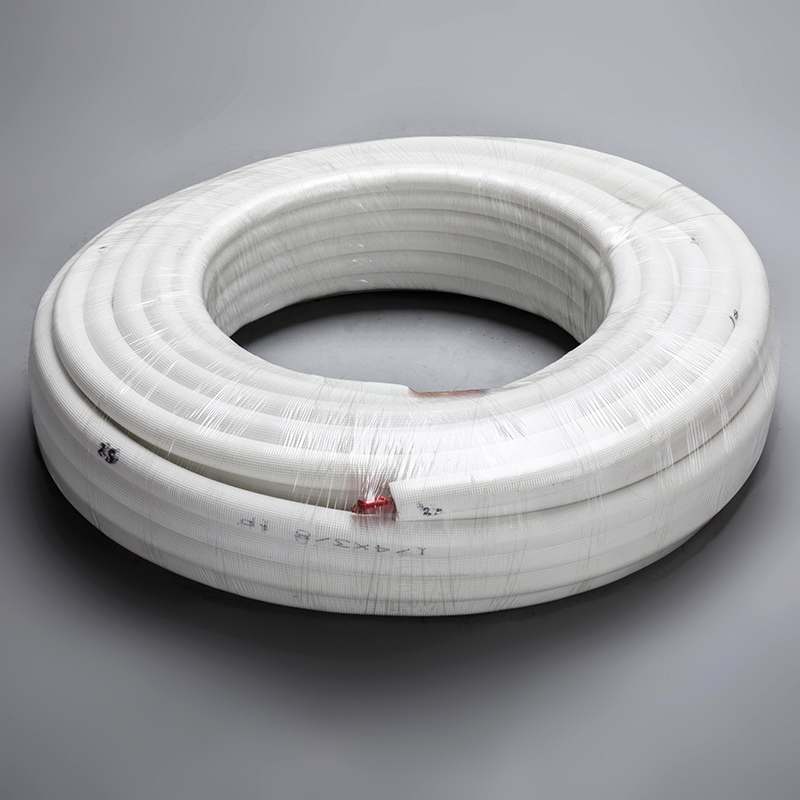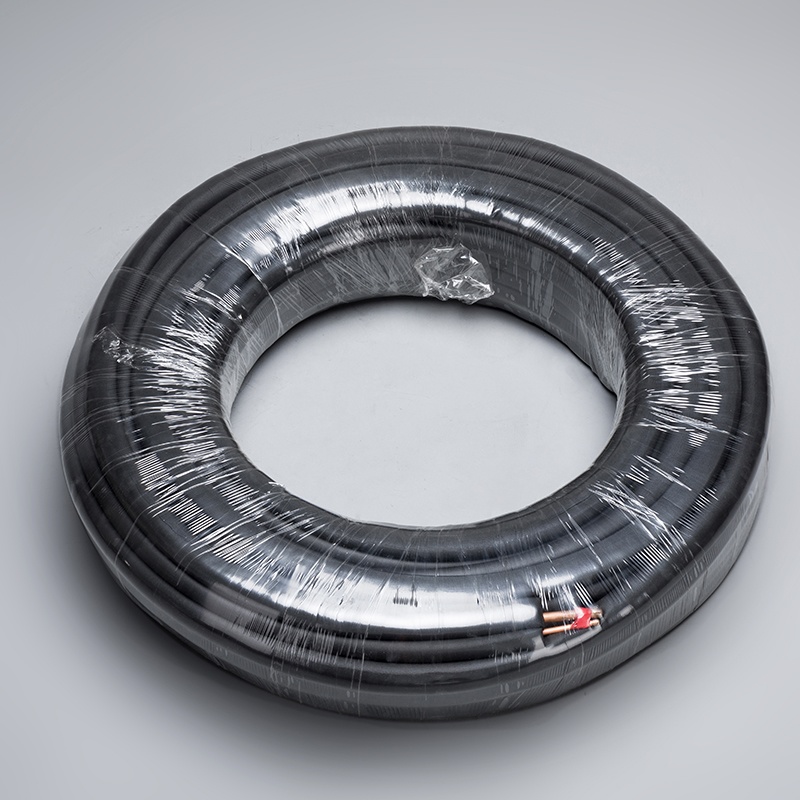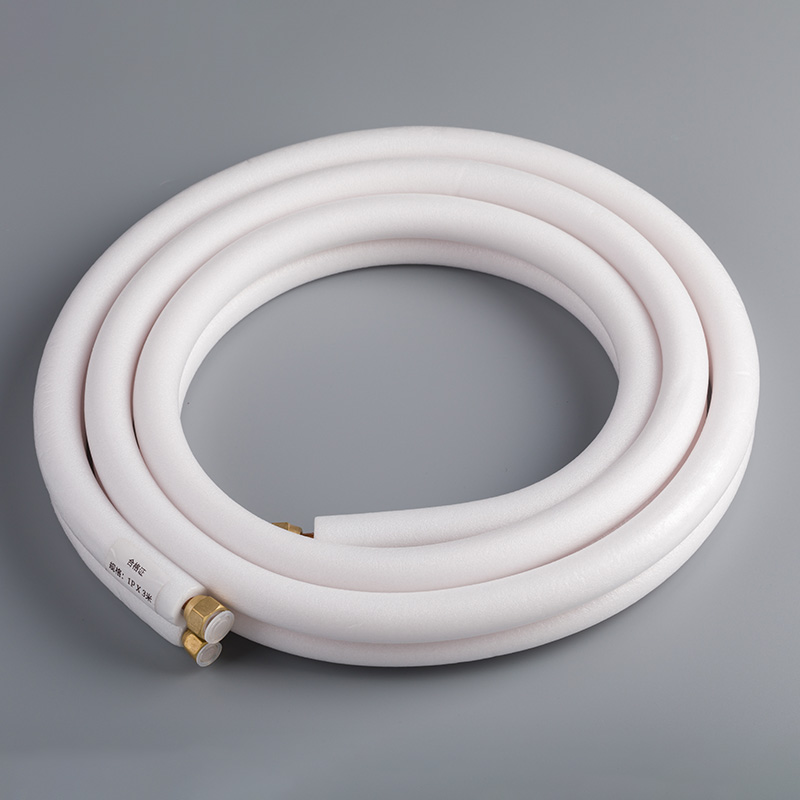Understanding the Market Dynamics of Air Conditioner Pipes

The global market for air conditioner copper pipes is experiencing rapid growth, driven by increasing air conditioner pipe demand. From 2023 to 2032, its value is projected to rise from $5.2 billion to $9.1 billion, reflecting a yearly growth rate of 6.5%. This surge is attributed to a higher need for air conditioner pipes, along with advancements in pipe materials and the adoption of eco-friendly systems. Additionally, investments in building infrastructure and government initiatives aimed at energy-saving cooling solutions further contribute to the demand for these essential components. Air conditioner pipes play a crucial role in HVAC systems, facilitating the efficient flow of refrigerants and promoting energy conservation.
Key Takeaways
The air conditioner pipe market may grow from $5.2 billion in 2023 to $9.1 billion by 2032. This is due to higher demand and eco-friendly ideas.
Air conditioner pipes are important for HVAC systems. They help refrigerants flow well and save energy, making indoor spaces more comfortable.
New technology, like lighter materials and smart features, is improving HVAC systems. These changes make them work better and easier to use.
Growing cities in some areas create big chances for air conditioner pipes. More people want cooling systems in these places.
Problems like fewer materials and higher copper and aluminum prices can slow production. But new ways to make pipes can help lower costs.
Market Overview
What Are Air Conditioner Pipes?
Definition and purpose in HVAC systems.
Air conditioner pipes are key parts of HVAC systems. They carry refrigerants, which help cool or heat spaces by moving heat. Without these pipes, HVAC systems wouldn't work well. They keep refrigerants flowing smoothly, ensuring comfort at home or work.
Types of air conditioner pipes (e.g., copper, aluminum, composite).
Air conditioner pipes are made from different materials. Copper pipes are popular for being strong and conducting heat well. Aluminum pipes are cheaper and lighter but not as strong. Composite pipes mix materials for strength, flexibility, and cost savings. The right pipe depends on needs, budget, and environment.
Role of Air Conditioner Pipes in the HVAC Industry
Importance in refrigerant flow and heat exchange.
Air conditioner pipes are important for moving refrigerants and exchanging heat. Copper pipes are especially good for keeping HVAC systems efficient and reliable. They transfer heat well, improving air quality and comfort indoors. This matches the rising need for eco-friendly cooling.
Contribution to energy efficiency and system performance.
The type and design of pipes affect energy use and performance. Good pipes cut energy loss, saving electricity and money. They also help protect the environment. As demand grows, companies make better pipes to improve systems and save energy.
Market Size Analysis
Current Market Size
The global air conditioning copper pipe market was valued at USD 5.2 billion in 2023.
The market for air conditioning copper pipes grew to $5.2 billion in 2023. This shows how HVAC systems are now widely used. Both homes and businesses need better cooling systems. This demand is growing quickly in many areas.
Regional breakdown: North America dominated the market in 2022, followed by Europe and Asia Pacific.
North America led the market in 2022 due to advanced HVAC use. Europe came next, focusing on saving energy with new technologies. Asia Pacific also grew fast because of more cities and industries. These regions show how important air conditioner pipes are worldwide.
Factors Driving Market Growth
Rising demand for air conditioning in residential and commercial sectors.
More people want air conditioning because of growing cities and incomes. In homes, apartments and crowded housing need better cooling. Offices and stores also want cool spaces for workers and customers.
Here’s a look at how homes add to the market:
Segment | Revenue Share | Factors Contributing to Demand |
|---|---|---|
Residential | 39.71% | More apartments, urban growth, higher incomes, energy-saving focus |
Air conditioners are being used more over the years. This is due to hotter weather, new homes, and energy-saving awareness.
Technological advancements in HVAC systems.
New HVAC technology helps the market grow faster. Companies make stronger, better pipes now. Eco-friendly systems are also popular for helping the planet. Governments support these changes with energy-saving rules.
Factor | Description |
|---|---|
Novel Piping Materials | Stronger and longer-lasting materials for pipes. |
Eco-friendly Systems | More demand for green and sustainable pipe systems. |
Infrastructure Investments | More money spent on building projects in growing countries. |
Government Programs | Rules that encourage energy-saving cooling systems. |
Increasing focus on energy efficiency and sustainability.
Saving energy is now very important for everyone. People are switching to eco-friendly refrigerants and materials. These changes help the planet and save money. This makes better air conditioner pipes more needed to improve systems and save energy.
Market Share Analysis
Major Players in the Market
Overview of leading companies, such as Daikin Industries, Mitsubishi Electric, and Johnson Controls.
The air conditioner pipe market has many big companies. Daikin Industries, Mitsubishi Electric, and Johnson Controls are leaders. They succeed by making new and reliable products. These companies sell to both homes and businesses worldwide.
For example, Daikin focuses on saving energy. Mitsubishi Electric works on advanced technology. Johnson Controls cares about eco-friendly solutions. These companies meet customer needs and set high standards in the market.
Market share distribution among key players.
These companies control most of the market. Daikin leads with its wide product range and strong reputation. Mitsubishi Electric is close behind with its tech expertise. Johnson Controls also has a big share due to its green focus. Together, they dominate the market, leaving little space for smaller companies.
Competitive Positioning
Strategies adopted by major players, including innovation and partnerships.
Big companies use smart strategies to stay ahead. They focus on creating better, stronger, and energy-saving pipes. Partnerships are also important. Working with suppliers and distributors helps them grow. For instance, Mitsubishi Electric teams up with local distributors in new markets.
Impact of mergers and acquisitions on market dynamics.
Mergers and acquisitions change the market a lot. Companies buy others to get new ideas or enter new areas. The table below shows key strategies:
Competitive Strategy | Description |
|---|---|
Mergers and Acquisitions | Companies buy others to grow stronger in the market. |
Product Innovation | New products are made to meet customer needs. |
Market Expansion | Companies move into new areas to sell more. |
Compliance with Regulations | Following rules is important to stay competitive. |
These strategies help companies grow and improve. Buying smaller firms helps them save money and work better. This benefits both businesses and customers by improving products and services.
Key Market Trends

Technological Advancements
Creation of lightweight and strong materials.
Air conditioner pipes are getting better and more advanced. Companies now make pipes that are light but also strong. These new materials help HVAC systems last longer and work better. For example, stainless steel pipes are tough and handle heat and pressure well. Aluminum pipes are light and transfer heat quickly. Plastic composite pipes are flexible and strong, making them a good choice too. The table below shows these materials and how they are used:
Material | Properties | Application |
|---|---|---|
Stainless Steel | Strong, handles high pressure and heat, resists rust | CO2 air conditioning systems |
Aluminum | Lightweight, transfers heat well | General air conditioning systems |
Plastic Composites | Flexible, durable | New HVAC technologies |
These new materials make systems work better and cost less. This benefits both companies and users.
Adding smart technology to HVAC systems.
Smart technology is changing how HVAC systems work. Some air conditioners can now adjust settings by sensing the room's needs. They use sensors and IoT (Internet of Things) to work smarter. This saves energy and makes rooms more comfortable. You can also control these systems from your phone, which is very convenient.
Sustainability and Environmental Concerns
Using eco-friendly refrigerants and materials.
The HVAC industry is moving toward greener refrigerants and materials. This helps reduce harm to the environment. Programs like the AIM Act aim to cut harmful refrigerants by 85% in 15 years. Other programs, like the Clean Air Act, also support eco-friendly choices. Key points include:
New refrigerants like HFOs meet strict rules.
Energy-saving systems are now a global focus.
Certifications like LEED promote green building designs.
These changes match the growing need for efficient and eco-friendly air conditioner pipes.
Rules pushing for greener practices.
Laws are shaping the HVAC market to be more sustainable. Governments are setting stricter rules for refrigerants and energy use. These rules push companies to create better, greener products. For example, the AIM Act and Clean Air Act guide companies to lower emissions. These laws protect the planet and improve HVAC systems.
Regional Growth Patterns
Fast urban growth in developing areas.
Cities in developing regions are growing quickly. This increases the need for HVAC systems. In Latin America, city populations may grow by 10% by 2030. Brazil’s HVAC market is expected to grow by 6.2% yearly. In the Middle East and Africa, cooling uses 70% of peak electricity in Gulf countries. Africa spends over $100 billion yearly on buildings, boosting air conditioning demand.
Region | Key Statistics |
|---|---|
Latin America | Cities growing by 10% by 2030; Brazil's HVAC market growing 6.2% yearly. |
Middle East & Africa | Cooling uses 70% of peak electricity in Gulf countries; Africa spends over $100 billion yearly on buildings. |
More HVAC demand in hot and humid places.
Hot and humid areas need more HVAC systems. Places like Southeast Asia and the Middle East rely on air conditioning because of high temperatures. The need for air conditioner pipes is growing in these regions. As cities expand, this demand will keep increasing.
Challenges and Opportunities

Challenges in the Market
Problems with supply chains and material shortages.
Supply chain issues are a big problem for air conditioner pipes. Events like pandemics and global conflicts delay raw material deliveries. These delays slow production and raise costs for companies. This makes HVAC systems harder to find, especially during busy seasons.
Material shortages are another challenge. Copper and aluminum, needed for pipes, are often hard to get. This makes it tough to produce high-quality pipes on time. It also affects the growing demand for air conditioner pipes.
Higher prices for copper and aluminum.
The cost of copper and aluminum keeps rising. Copper prices are up because of high demand and less mining. Aluminum is cheaper but still costs more due to energy-heavy production. These price increases make HVAC systems more expensive. Companies struggle to keep prices low for customers.
Opportunities for Growth
Expanding into new markets in growing regions.
Developing areas offer great chances for market growth. Several reasons explain this:
New pipe materials last longer and work better.
Green pipe systems are popular as people care about the planet.
Big building projects in these areas need more air conditioning.
Governments support energy-saving cooling systems, boosting demand.
These regions give companies a chance to find new buyers and grow their business.
New ways to make pipes cheaper.
Better manufacturing methods are cutting costs and improving work. For example, companies use drones and robots for smarter HVAC repairs. Hydronic systems use water instead of air, saving energy. Geothermal systems use underground heat to lower energy use a lot.
Innovation Type | Description |
|---|---|
Drones and Robotics | Makes HVAC repairs smarter and cheaper. |
Hydronic Systems | Uses water for heating and cooling, saving more energy. |
Geothermal Systems | Uses underground heat to save energy and cut costs. |
These ideas lower costs and make HVAC systems better for the planet.
Upgrading old HVAC systems.
Fixing and improving old HVAC systems is a growing trend. Older systems waste energy and use outdated materials. Adding modern pipes can make them work better and save energy. This fits with the global focus on saving energy and being eco-friendly. It creates a steady need for better solutions.
The air conditioner pipe market is growing fast. Its value may increase from $5.2 billion in 2023 to $9.1 billion by 2032. This rise is due to more demand, growing cities, and better cooling technology. Companies like DENSO Corporation and Hanon Systems use AI and automation to improve systems. These changes make pipes more efficient and eco-friendly. A 220-page market study shares ways to handle problems and find new chances. By solving material shortages and exploring new areas, businesses can grow in this market.
FAQ
What materials are often used for air conditioner pipes?
Air conditioner pipes are usually made of copper, aluminum, or composites. Copper lasts long and transfers heat well. Aluminum is light and cheaper. Composite pipes mix strength and flexibility, balancing cost and performance.
How do air conditioner pipes help save energy?
These pipes reduce energy waste by moving refrigerants smoothly. Good pipes also exchange heat better. This makes HVAC systems work efficiently, saving power and cutting bills.
Why is copper a popular choice for air conditioner pipes?
Copper is popular because it conducts heat very well. It is strong, resists rust, and handles high pressure. These features make it a dependable option for HVAC systems.
Are there green options for air conditioner pipes?
Yes, there are eco-friendly pipe choices. Some pipes are made from recyclable materials. Others work with green refrigerants, helping the environment and saving energy.
What problems do manufacturers face when making air conditioner pipes?
Manufacturers deal with rising costs of materials like copper and aluminum. Supply chain delays also slow production. These problems make it harder to meet the growing demand.


